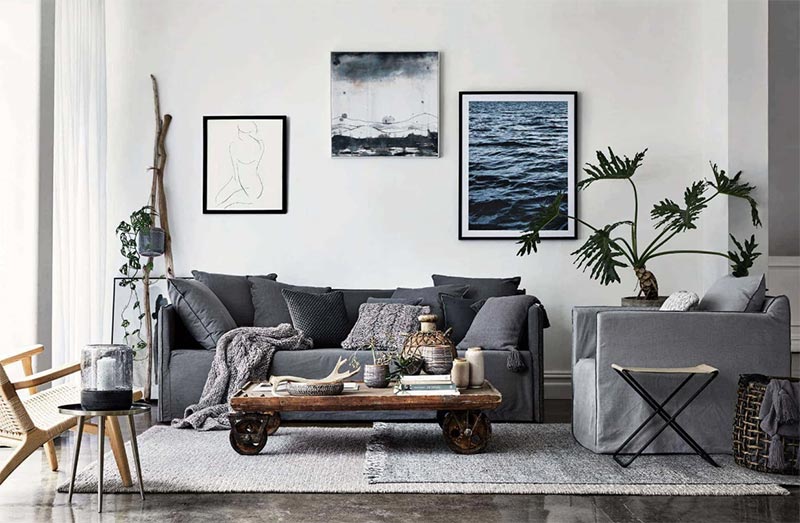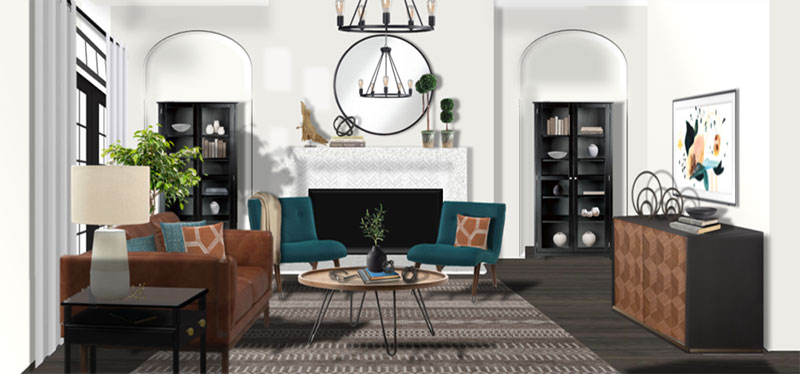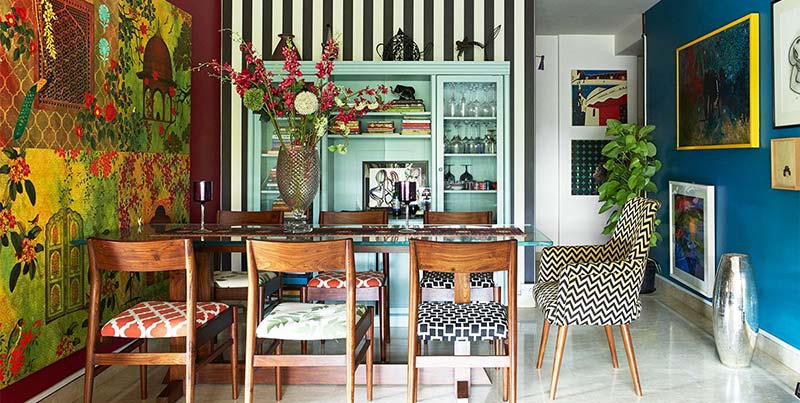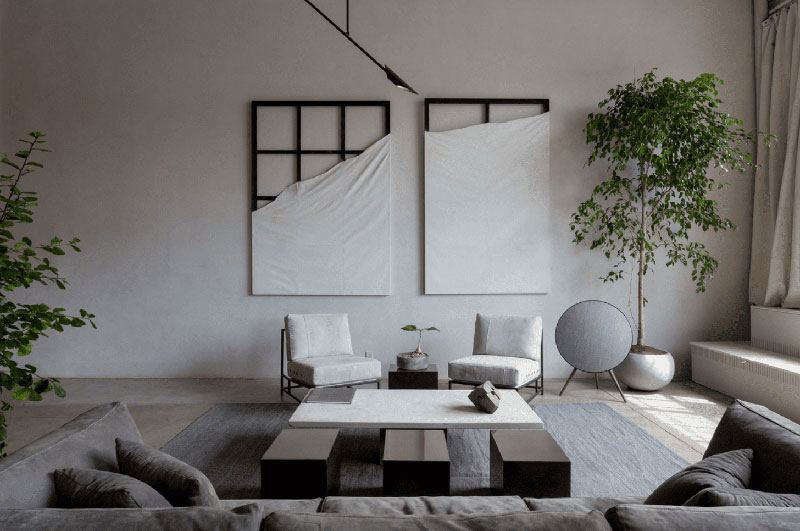Your home is a reflection of your style, taste, and personality. It’s where you unwind, entertain guests, and create memories. As a homeowner, you may feel restricted by traditional interior design rules, wanting to mix and match different styles but unsure where to start.
The good news is that blending different aesthetics can be a beautiful and harmonious way to create a unique and cohesive home decor. Let’s explore the art of mixing interior design styles and provide practical tips and advice to help you achieve the perfect balance.
Understanding Interior Design Styles
Before we go further, it’s essential to have a basic understanding of interior design styles. Interior design has evolved, with many different styles emerging and fading in popularity. Some popular interior design styles include traditional, modern, transitional, industrial, bohemian, and coastal. Each of these has unique characteristics, from color schemes and furniture to decor and accessories.
Identifying your preferred style can help you decide which to blend. Take your time in researching and exploring the different interior design styles. You can do this by browsing design blogs and magazines. Visiting interior design showrooms can also help you better understand the styles that will resonate with you.
Principles of Mixing Interior Design Styles
Mixing interior design styles is all about achieving balance, contrast, scale and proportion, color, texture, and unity. Here are some of the most vital design principles to take note of when mixing different styles:
Balance: To create a cohesive and harmonious look, you need a balanced mix of styles. This is necessary to ensure that no one style takes center stage.
Contrast: To add interest and dimension to your space, add contrasting elements. For example, pairing a traditional sofa with a modern coffee table or a coastal rug with an industrial-style lamp.
Scale and Proportion: Maintaining consistent scale and proportion when blending different styles is crucial. Try to avoid using oversized or undersized furniture in a room, as it can make the space look unbalanced.
Color: Color can be great in tying everything together when mixing different styles. Select a color combination that complements each of the style you’re blending.
Texture: To add depth and visual interest to a room, you’ll need to use texture. You can mix smooth, rough, shiny, and matte textures to create an inviting and tactile space.
Unity: Unity is vital in achieving a cohesive look. While blending different styles, it’s essential to have a unifying element that ties everything together.
A Few Helpful Tips for Mixing Interior Design Styles
Mixing interior design styles may seem overwhelming initially, but it can be a fun and rewarding process with a few tips. Here are some to help you get started:
Start with a neutral base: Neutral colors such as white, beige, or gray can create a blank canvas for mixing different styles.
Choose a dominant style: Select one style you want to be the focal point and base your design around it. It can be the style that most resonates with you or suits your home’s architecture.
Layer in complementary styles: After choosing your dominant style, start by layering in complementary styles. As an example, if you’re going for a modern style, you can add traditional elements such as a vintage rug or an antique mirror.
Mix and match furniture and decor: Create an eclectic and personalized look by mixing and matching furniture and decor from different styles.
Use color to tie everything together: As mentioned earlier, color can unify a scheme. Choose a color palette that will complement the different styles you’re blending.
Experiment with patterns and textures: You can use patterns and textures to add depth and visual interest to your space. Explore different designs and textures, such as florals, stripes, and geometric shapes. Mix them with a variety of materials like wood, metal, and glass.
Play with lighting: Transform the mood and atmosphere of a room through the use of creative lighting. Mix different types, such as overhead, floor lamps, and table lamps, to create a warm and welcoming space.
Add a unifying element: To tie everything down together, add a unifying element, such as a statement piece or a common color. It could be a piece of art, a rug, or a decorative accessory.
Examples of Blending Interior Design Styles
Now that you know the principles and tips for mixing interior design styles, let’s take a look at some examples of blending different styles:
Modern Bohemian

Image Source: Grace in My Space
Blend modern furniture with bohemian accessories such as macrame wall hangings, colorful textiles, and plants.
Coastal Industrial

Image Source: TLC Interiors
Combine coastal elements such as seashells and driftwood with industrial elements such as metal and concrete to create a beachy yet urban vibe.
Traditional Scandinavian

Image Source: Havenly Hideaway
Mix traditional furniture with Scandinavian decors such as clean lines, neutral colors, and natural materials like wood and leather.
Rustic Glam

Image Source: Decorilla
Blend rustic elements such as reclaimed wood with glamorous accessories such as metallic accents and velvet upholstery.
Mid-Century Modern Farmhouse

Image Source: Michael Helwig Interiors
Combine mid-century modern furniture with farmhouse elements such as shiplap walls, vintage accessories, and natural wood finishes to create a cozy and inviting space.
Art Deco Bohemian

Image Source: House Beautiful
Blend art deco elements such as geometric patterns and metallic accents with bohemian accessories such as colorful textiles and macrame plant hangers for a bold and eclectic look.
Industrial Chic

Image Source: MyDomaine
Mix industrial elements such as exposed brick and metal pipes with chic accessories such as plush velvet upholstery and statement lighting fixtures for a sophisticated yet edgy vibe.
Hollywood Regency Glam

Image Source: Livingetc
Combine Hollywood regency style, with its plush fabrics and elegant lines, with glamorous accessories such as mirrored surfaces and metallic accents for a luxurious and opulent look.
Minimalist Eclectic

Image Source: Home Designing
Mix minimalist furniture with eclectic accessories such as colorful artwork, patterned rugs, and unique decorative objects to create a dynamic and visually exciting space.
Final Thoughts
Keep in mind that there are no hard and fast rules when it comes to mixing interior design styles. The most important thing is to explore, experiment, and create a space that reflects your personality and style. Have fun blending different styles and elements while you achieve a home decor that is both unique and cohesive.
